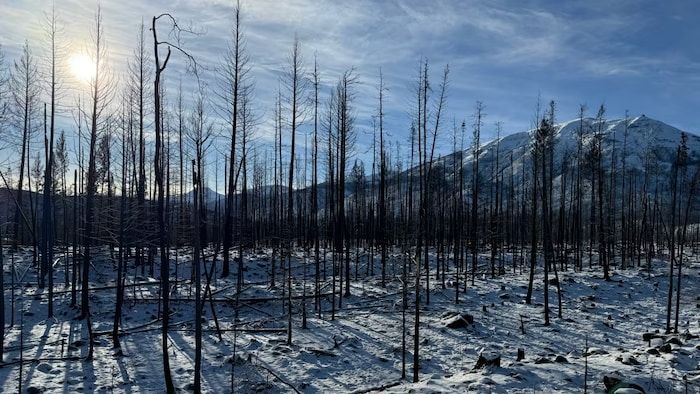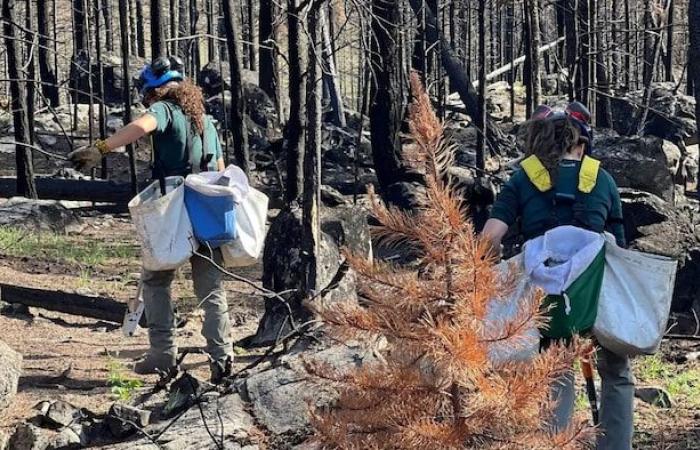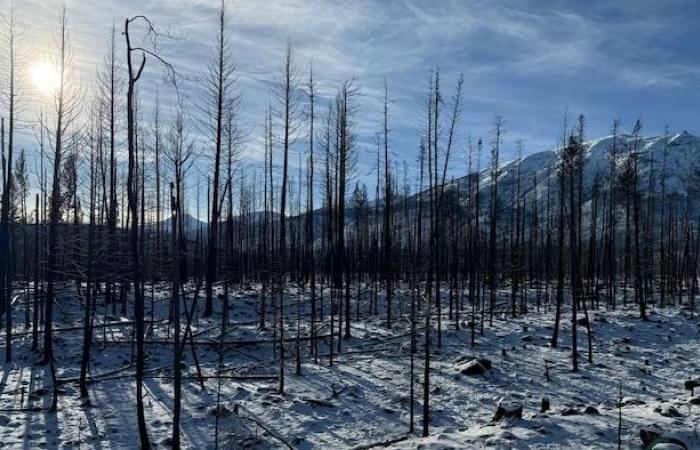The parts of Jasper National Park devastated by a fire in July are beginning to find signs of life, thanks in particular to a reforestation program which has supported natural regrowth.
The landscape, although very fragile, has greened up quite quickly, which is rather encouraging. This is a sign that there is still a seed base on the ground
rejoices Marcia Dewandel, vegetation restoration specialist at Parks Canada.
Last summer’s massive fire, the largest recorded in this Alberta park in over a century, is estimated to have burned more than 32,000 hectares.
Some trees and their roots have been so severely damaged that they will not grow back, but others, with deeper, sprawling root systems, have a chance to grow back naturally.
Species adapted to fire, such as aspen, various willows, forbs and grasses, will return first
says Marcia Dewandel.
Open in full screen mode
Marcia DeWandel (left), vegetation restoration specialist at Parks Canada, with her colleague James McCormick, resource management officer.
Photo : - / Acton Clarkin/CBC
5000 new trees planted
Over the past two months, Parks Canada has planted 5,000 Douglas fir seedlings in fire-ravaged areas to supplement the natural regrowth of the forest.
This tree species was chosen mainly because of its deep root system, which makes it more resistant.
Parks Canada also plans to plant aspen and willows in the coming years.
The roots of the new trees will better hold the soil weakened by the fire, which will help prevent erosion, as Marcia Dewandel explains.
Soil erosion is of particular concern near lakes and rivers because sediment that enters the water can harm underwater ecosystems.
According to Marcia Dewandel, tree planting efforts have focused on areas near water and popular hiking and camping spots.
Open in full screen mode
Parks Canada representatives and volunteers planted several thousand Douglas firs in the parts of the park consumed by the fire.
Photo : Parcs Canada
Decades to regenerate
As for when the charred areas of the park might look like they once did, Ellen Macdonalda retired professor of forest ecology, predicts it could take decades.
It will take 40 to 50 years to recover what we consider to be large and mature trees.

Open in full screen mode
Wild animals will have a harder time finding food in this sparse landscape.
Photo : - / Acton Clarkin/CBC
Shortage of food for animals
Furthermore, the park’s wild animals will have more difficulty finding food this winter due to the reduction in forest cover, as noted James McCormickresource management officer at Parks Canada.
Bare forests also make it harder for some animals to hide when hunting prey, and animals lower on the food chain have a harder time hiding from predators.
Due to food shortages and security, many animals are expected to move to unburned forest areas. This can increase the density of animals in certain areas, which can lead to competition within the species itself
as indicated James McCormick.
With information from Acton Clarkin








